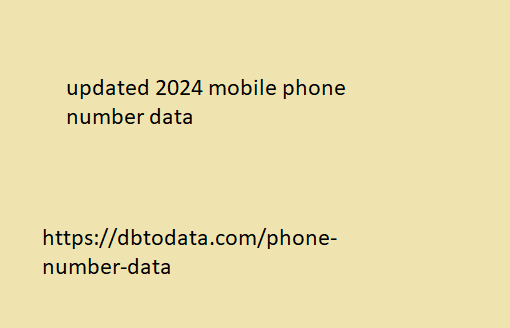The data comes from the advertiser options, namely remarketing and advertising reporting functions. These functions will not work on their own, they need to be enabled (Google has instructions ).
Once enabled, 3 sources will be available for collecting demographic information: the third-party DoubleClick cookie, the Android advertising identifier, and the iOS advertising identifier IDFA.
The first source, DoubleClick, can determine the gender of the site visitor who opens the page using a web browser. There is middle east mobile number list one condition for correct operation – the presence of a cookie file. This is important because DoubleClick extracts data from there.
The second and third sources work only with actions in Android and iOS apps respectively. GA creates a new identifier based on the user’s actions in the app.
When evaluating the report, it is important to understand that not all data about the user’s gender may be available, and therefore the report does not always reflect the exact situation. And the AMP page tracking code and analytics.js cannot collect such information at all.
Read on the topic:
“Evaluation of SEO promotion efficiency in statistical systems”
How does GA determine the source of traffic?
GA can detect several different sources:
Sources
Although they are all different, GA recognizes them by one parameter – HTTP_REFERER. This is a referrer that contains the URL of the request source.
For example, if a user comes from the vk.com website, the referrer will contain this address, and then the transition will be attributed to the Social source.
If there is no referrer, the transition is given the Direct category – that is, a direct visit to the page.
How does GA calculate bounce rate?
Google Analytics has គំនិត 4 ដើម្បីបង្កើតអាជីវកម្មខ្នាតតូច adopted a strict strategy for calculating bounce rates: a bounce is defined as viewing only one page. Even if a user visits a page on a website and spends several minutes there, but does not perform any actions, that visit will be considered a bounce.
To prevent GA from counting a ar numbers bounce, the user must do something: go to another page, fill out a form, upload a video, add a product to the cart. This action sends a second request to the GA server (the first is opening the page), which prevents the visit from becoming a bounce.
Let’s look at an example of how this works. Let’s say a visitor opens a site, looks at what’s published there, and closes the site. In this case, GA registers a bounce. Another scenario: a visitor opens a site, looks at a page, then goes to another. GA registers a session in which the user accessed 2 pages of the site. There is no bounce.
In Google Analytics, the bounce rate report can be found in the traffic sources overview:




